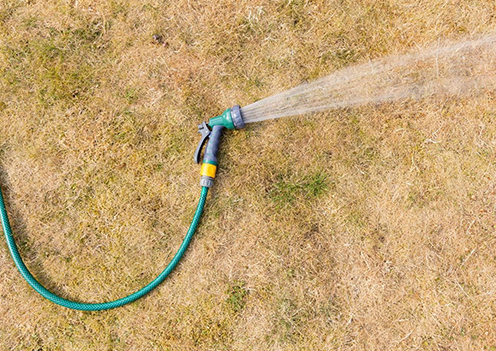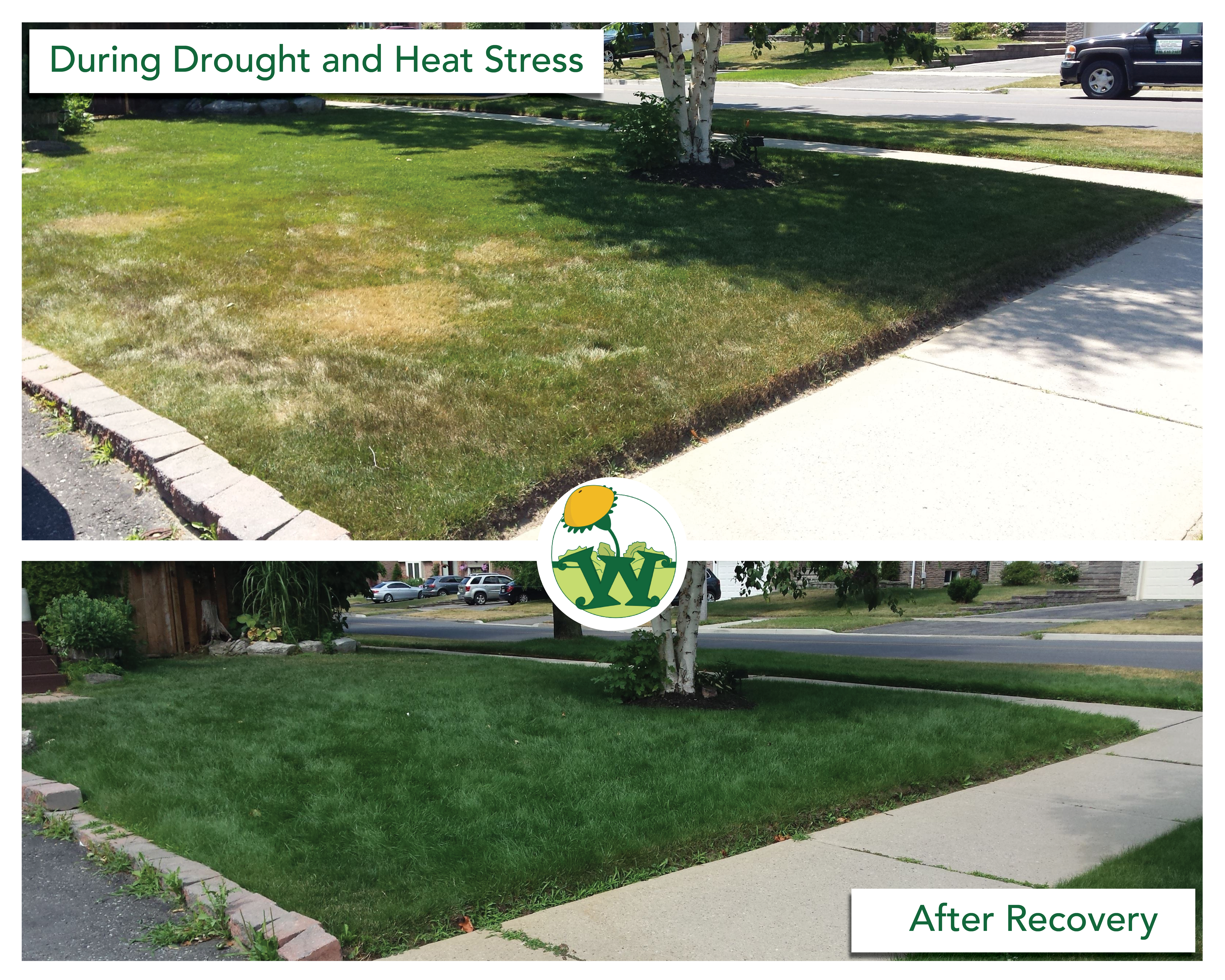Your Cart

Sunshine, summer vacations, and plenty of time outside–the summer season is for relaxing and reducing stress. Unfortunately, the same can’t be said for your lawn. The extreme temperatures of the season can cause a formerly vibrant lawn to dry out and wither. One of the most common summer conditions affecting lawns is heat and drought stress. Heat and drought stress occurs when your lawn experiences a significant loss of moisture during consistently hot, dry weather. It’s not always a simple diagnosis, but there are a few common indicators that your grass may be experiencing heat and drought stress. Ghost Prints: Usually, when you walk across your healthy lawn the grass will bounce back within seconds. With heat and drought stress, however, the grass will stay flat instead of bouncing back, leaving what looks like ghost footprints behind you. Discoloration: When your lawn is suffering from heat and drought stress, the tips or entire blades of grass will become discolored. However, this symptom can be a tricky one, because many other turf conditions, such as insect damage and lawn disease, can result in similar discoloration. Soil Compaction: A lack of moisture can cause your soil to become compacted. Here’s a simple test. Try pushing a screwdriver into the surface of your lawn. If you can easily insert the tool, then your yard likely has adequate moisture. If you face resistance, then the soil requires additional water. If you feel like your lawn is suffering from heat and drought stress, here are a few steps you should take to help it recover as soon as possible: During periods of heat and drought stress, water deeply and more frequently than you normally would. If you live in a more northern region of North America, this might mean watering about 3 to 4 times a week. If you live in a more southern region, with hotter weather and less rain, you might need to water every other day to help your lawn green up again. The ideal time to water your lawn early in the morning, between 5 and 9 am, when temperatures are cooler and the water will not evaporate. Ask your local Weed Man professional for specific watering tips that suit the conditions of your lawn and geographic location. Raise your mowing height during the summer heat, and never remove more than 1/3 of the leaf blade in a single mowing session. Keeping your grass a little longer helps to keep the crowns of the grass plant cool and shaded, which will help the lawn maintain its color and health. Much like watering, it’s best to mow in the morning when possible. Make sure you keep the mower blade razor sharp to help the grass plants heal and prevent a brown appearance. In the fall and spring, mechanical core aeration can relieve soil compaction through its process of mechanically removing cores of soil, ultimately encouraging the uptake of nutrients and oxygen through a deeper root system. This can give your lawn a better chance to withstand the summer heat. Poor growing conditions such as clay or sandy soils may require a little extra attention. Annual aeration will reduce water run-off, which allows more water to reach the rooting system and provide a healthier lawn. If the heat and drought stress is severe, your lawn may go dormant. In this case, have no fear! This is your lawn’s natural survival mechanism. With the right care, your lawn should green back up again and make a full recovery. If you notice that some areas of your lawn are struggling to return to their former health, you may need to use seed or sod to repair the damage. If you are taking the above measures and do not notice any improvement in the health of your lawn, there may be some other damaging conditions at play, such as pest activity and disease. To verify, take a closer look at your turf. If chinch bugs are the culprit, you may be able to see small red insects crawling at the base of the grass blades in the thatch layer. If grubs are to blame, you will be able to roll back the turf like a carpet. Consult our list of common lawn diseases for recognizable signs of disease.
Signs of Heat and Drought Stress On Your Lawn
Treating Heat and Drought Stress In Your Lawn

What To Do If These Measures Do Not Work
Whatever the cause, Weed Man’s certified technicians are trained to diagnose lawn diseases and insect damage specific to your region and lawn conditions. Give us a call so we can recommend the best solutions for your lawn. Your Weed Man professional will work with you to ensure the health of your lawn throughout periods of heat and drought stress. Find a Weed Man near you, and get a free quote today!